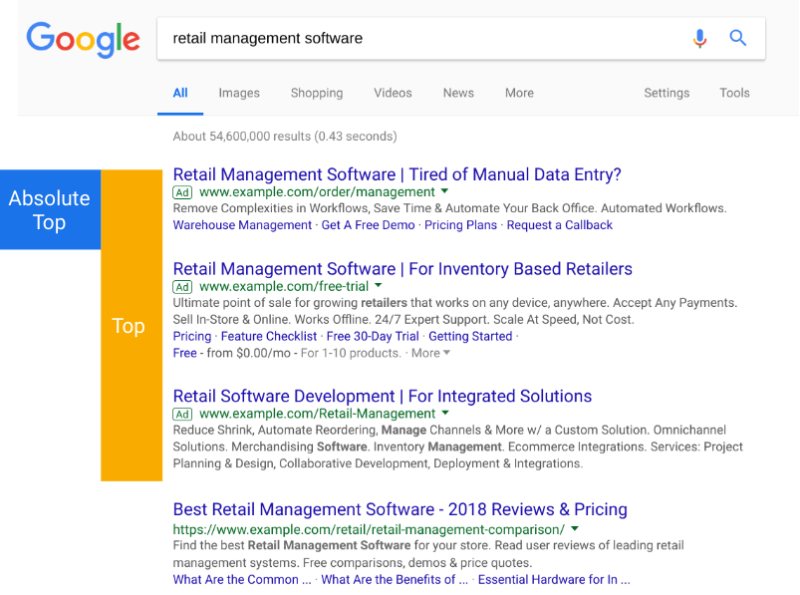Image: Google
To help advertisers get a clearer understanding of where their ads are appearing in search results, Google Ads is going to be rolling out four new ad position metrics over the next several weeks.
Why it matters. Average position has always been a bit of a fuzzy indicator of where your ads appear on the search results page. The first ad slot is not always at the top of the page above the organic results.
Right rail ads have been gone in Google for some time now, but now there are instances when the first ad on the page is actually at the very bottom, below all the organic results. All of a sudden, position one looks like less of a coup. And a lower click-through rate suddenly makes more sense.
What’s new? There are two metrics around the absolute top position on the page (i.e. what everyone typically thinks of as position one) and two around all ad impressions that display above the organic results.
- Impr. (Absolute Top) %: This is what most people think of as position one. The metric shows the percent of your ad impressions that are shown as the very first ad above the organic search results.
- Impr. (Top) %: The percent of your ad impressions that are shown anywhere above the organic search results.
- Search (Absolute Top) IS: The impressions you’ve received in the absolute top location above the organic results divided by the estimated number of impressions you were eligible to receive in the top location.
- Search (Top) IS: The impressions you’ve received in the top locations above the organic search results compared to the estimated number of impressions you were eligible to receive in the top location.
How to use them. The two Impression % metrics show when and where ad impressions display above the organic results.
The two IS (impression share) metrics show the share of impressions that were eligible for top-of-page impressions, above the organic results.
If you’re using average position to bid to a location on the page, Google suggests using the new impression share metrics to achieve those goals.
Contributing authors are invited to create content for Search Engine Land and are chosen for their expertise and contribution to the search community. Our contributors work under the oversight of the editorial staff and contributions are checked for quality and relevance to our readers. The opinions they express are their own.




